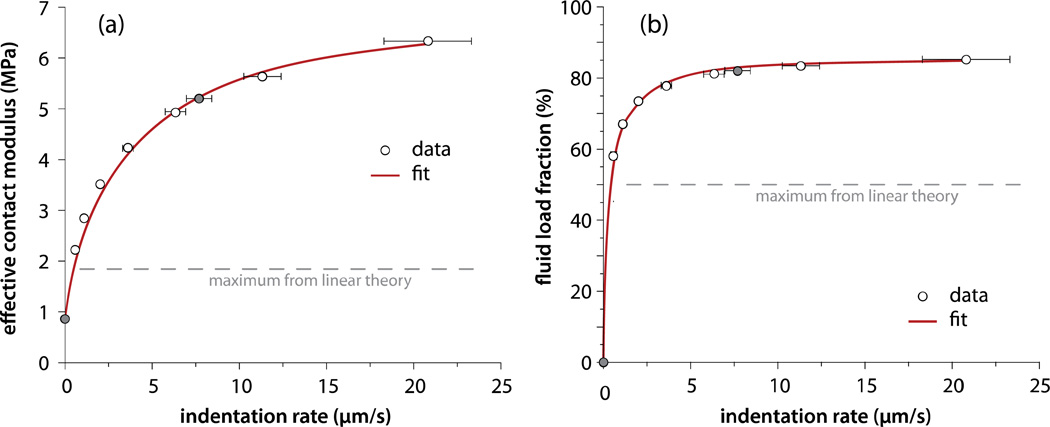Figure 6.
(a) Effective contact modulus and (b) fluid load fraction increase monotonically with indentation rate toward asymptotes representing the theoretical instantaneous response. The shaded data (7.7 µm/s) were collected from depth-dependent equilibrium and non-equilibrium measurements (Fig. 3); the others never equilibrated (Fig. 5). The consistency demonstrates insensitivity to the equilibration step. Effective and equilibrium moduli are used to determine the fluid load fraction (Eq. 2). The fits assume a model (described in the discussion) of the form and R is the probe radius. Eq. 2 relates Ec to F’. The best fits shown reflect a permeability k=6×10−4mm4/(Ns), and F’max=86.5%.

